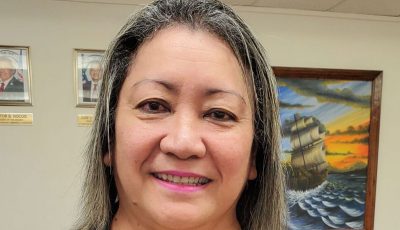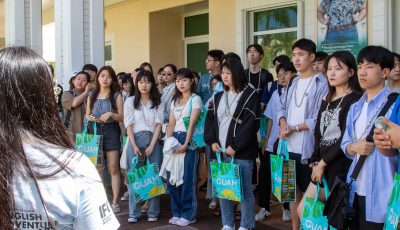The Great Pacific garbage patch
It was Constitution Day to the CNMI, Immaculate Conception to the religious, and the “day that will live in infamy” to FDR this week. Secretary Stinson remembered that 10-days before Pearl Harbor, FDR longed for Japan to attack so the U.S. can join the war. We had by then cut off Japan’s access to fossil fuel through Malacca, and Nippon extending its tentacles through Manchukuo to Shanghai and Nanjing was headed south all the way to Australia.
We keep an eye on the Pacific vortex. There’s a western patch just above the Northern Marianas southeast of Japan affected by the Kuhosio current that moves north from Philippines to Taiwan to keep the waters of western Japan warm, also gathers the region’s floating trash. The eastern patch that drifts between Hawaii and Baja de California is sludge of plastic and Styrofoam.
South of the polar cap north of the equatorial current up to 50 degrees is the North Pacific Gyre. NOAA’s geographical term, oceanographers predicted garbage patches in the late 80s, a great photo op for National Geographic. Five famous gyres are residences of garbage patches around the world.
For “vortex,” think air whirlpools or whirlwinds like the ones that paid us a visit Aug. 2 when Soudelor came, named after a fierce Pohnpei legendary chief, accompanied by four spinners. The word “gyre” is a term for a spiral spin. For a picture, think “tornado” in the U.S. southwest, or cyclone in the Bay of Bengal. The word “typhoon” reinforced by the Chinese tai fung (big winds) that the Portuguese called the typhoon from the Greek typhon and Arabic tufan (whirlwind) get us our storm and tempest.
The Great Pacific garbage patch floats marine debris of styrofoams, plastic bottles, and bags, from the West Coast of the U.S. to the East Coast of Asia.
Plastic do not biodegrade at all so they will exist forever. There is photodegradation that tears the plastic into little pieces at the level of microorganisms but the plastic changes only in form, not in substance. It is still the all too familiar plastic. Worst, in its microform, it enters the food chain through seafood organisms ingested as chemical pollutants to add toxicity to the food chain.
Massive deaths among young albatross on at Midway Island of Hawaii’s chain are attributed to the ingestion of plastic matter into their system. Uninhabited, the seafood around it meant to bring health to dining are laced with the handiwork of human laboratories that produces and packages foods and containers meant for our ease and comfort. Thanks, but no thanks. We slowly poison ourselves with the chemicals.
We’ve also altered the way we physically appear. A group picture taken of friends and acquaintances at Marpi indicates that Micronesian obesity is alive and well. A photo of Saipan agency heads, save one who is just jolly rotund, shows cholesterol in abundance. The garbage patch of the Pacific has moved to the non-pacific regions of our bodies. Don’t get me wrong. When Roxanne went into her “fat is beautiful” routine, it allowed my primal spouse to have a Hawaiian mu-mu and the body that went with it. She was a twig of a Caucasian community development worker in the Visayas that Caltex featured in one of its in-house publications in the late 70s, turned Hawaiian Mama. Roxanne shed the extra handle around the middle later but my spouse and eldest settled comfortably in their new look without apology.
Our Micronesian women hardly make it on Elle’s cover and Playboy forsook its brush-enhanced au naturel. Anyway, we are not too enamored with the anorexic look on the ramp walk. We take Micronesia’s women direct from Mama’s dining table “just the way they are,” thank you. They could refine the waddle walk of a duck a bit, and tighten the mooncake form of the physique, which is OK once every lunar cycle, but we’re cool. (The descriptions are meant to be graphic; judgment on beauty is in the mind of the beholder!)
We dare not snipe from behind a heavy screen. Expected employ faded after Soudelor; interviews found us “over qualified,” so we went on a carbohydrate diet specially when the kai lan (Chinese broccoli) and the kang kong suddenly moved to the boutique side of the ledger in our rare Subalu market forays. The upside is that in two months, we were 6 lbs lighter. Now, if I can find a way of not losing it from the cheeks and drop it from the mid-section’s extra tire, I will be OK.
The Great Pacific garbage patch is a sight we do not see from high in the sky when we fly. I no longer cruise the ocean as the practice has become a province of Hyannis Port bluebloods. Not to worry. The flotsam comes to us through the food we consume, so if you have some tears left on that tear duct, this would be the time to shed it for the planetary and human condition.
In the 1967 movie The Graduate, the brand new college grad character played by Dustin Hoffman was told not to forget “plastic,” a by-product of fossil fuel. He didn’t. Neither did we.



























